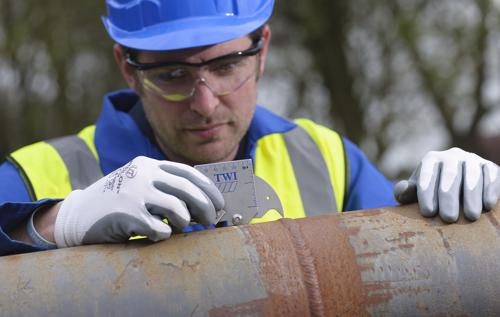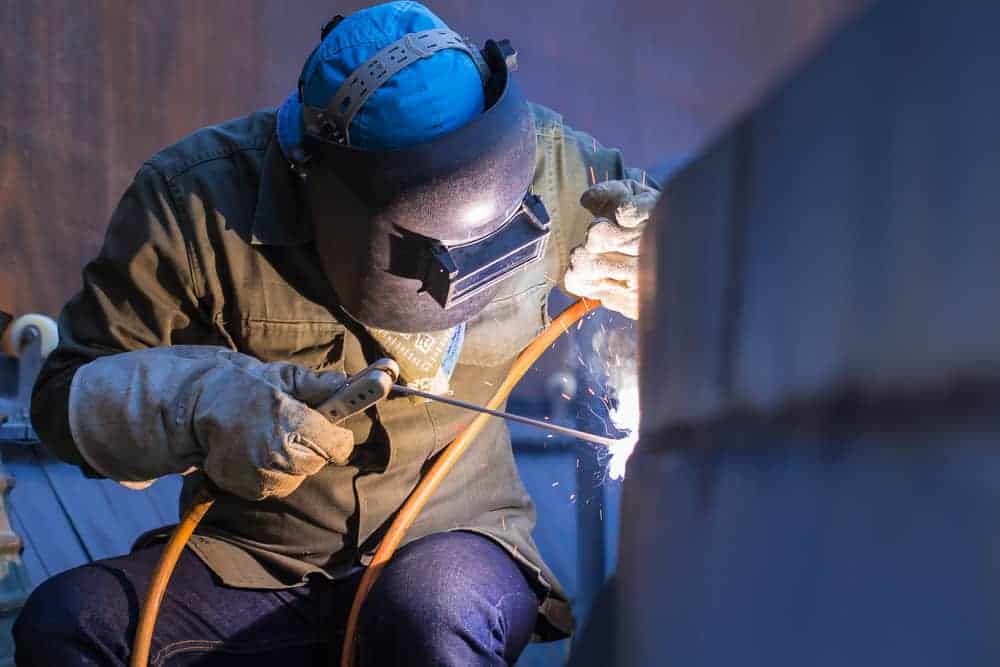Qualified Houston Welding Inspection Professionals for High-Quality Assessments
Wiki Article
Exactly How Welding Evaluation Works: An In-Depth Analysis of Approaches, Criteria, and the Role of Assessors in Making Certain Architectural Stability and Security
Welding evaluation is an essential element in the building and construction and manufacturing markets, where the honesty of welded joints is critical to safety and security and reliability. Inspectors are charged with not just reviewing weld quality against rigid standards but also translating complicated codes and criteria.Importance of Welding Evaluation
Welding assessment is critical in ensuring the integrity and safety of bonded structures, with researches showing that as much as 70% of structural failures can be mapped back to insufficient welding techniques. This underscores the value of organized examination processes throughout the welding lifecycle, from prep work to conclusion. Effective inspection not only identifies problems before they escalate into significant issues yet additionally makes certain conformity with sector requirements and guidelines.
The role of welding inspectors expands past mere quality assurance; they are essential in guarding public security and reducing liability for companies. By executing rigorous examination procedures, companies can detect troubles such as incomplete blend, fractures, or too much porosity, which can jeopardize the overall toughness of a welded joint. In addition, continuous training and accreditation of inspectors add to the overall quality control in welding procedures, fostering a culture of safety and security and excellence.
In enhancement, welding evaluation plays a crucial function in keeping functional effectiveness. Recognizing issues early in the procedure helps with prompt corrective actions, minimizing expensive rework and project hold-ups. Inevitably, a robust evaluation framework serves as a structure for reliable and long lasting welded frameworks, ensuring they satisfy both practical and safety and security requirements.
Typical Assessment Approaches
Just how can one make sure the high quality of welded joints throughout the evaluation process? The implementation of numerous examination techniques is vital in examining weld stability and identifying possible flaws. Typical methods consist of Visual Assessment (VT), which is typically the first line of protection, enabling inspectors to identify surface flaws such as splits, porosity, or incomplete fusion by aesthetically evaluating the welds.
Ultrasonic Examining (UT) is one more widely utilized technique, using high-frequency sound waves to recognize interior issues within the weld. This technique is particularly efficient for spotting concerns that are not visible to the nude eye. Radiographic Evaluating (RT) uses X-rays or gamma rays to develop photos of the weld, enabling the recognition of volumetric flaws, such as inclusions or voids.
Magnetic Bit Evaluating (MT) and Fluid Penetrant Evaluating (PT) are additionally popular approaches, concentrating on surface flaws. MT counts on magnetic areas to reveal surface and near-surface gaps, while PT entails applying a liquid dye to highlight problems. Each of these approaches serves an unique function, making certain the comprehensive examination of bonded joints and safeguarding structural stability and security.
Standards for Reviewing Welds
The evaluation of welds is directed by a set of well established standards that make certain both capability and safety and security in bonded frameworks. These criteria encompass various factors, including weld size, profile, and penetration, which should comply with defined requirements. Compliance with market codes, such as those set by the American Welding Society (AWS) or the American Culture of Mechanical Designers (ASME), is crucial in determining the reputation click for info of a weld.
Weld metallurgy plays a critical role; the analysis considers the combination top quality between base and filler products, along with heat-affected zones. Ultimately, the overall mechanical properties, including tensile toughness and ductility, must satisfy the needs established for the particular application. Jointly, these standards make certain that welds not only meet aesthetic requirements however likewise execute accurately under functional problems.
Duty of Welding Inspectors
A welding address assessor's proficiency is critical in making sure the stability and high quality of bonded structures. These experts play a vital function in the construction and building process by confirming that welding operations adhere to established requirements and requirements. Their obligations include an extensive variety of tasks, consisting of aesthetic assessment of welds, examining welding paperwork, and conducting non-destructive screening (NDT) approaches such as radiographic or ultrasonic testing to identify issues.Welding examiners are also liable for analyzing welding codes and criteria, making sure that the welders are certified click to find out more and that the materials utilized fulfill the essential demands - Houston Welding Inspection. They should maintain thorough records of inspections, which act as documentation of conformity and high quality guarantee. Moreover, these inspectors usually work together with designers and task managers to attend to any concerns that occur throughout the welding process, supplying recommendations for rehabilitative actions when needed.
Along with technical abilities, reliable communication is vital, as welding assessors must communicate searchings for plainly to stakeholders and facilitate training and assistance for welders. Inevitably, their duty is integral to maintaining security and dependability in bonded frameworks, adding considerably to the general success of building tasks.

Obstacles in Welding Examination
What barriers do welding examiners face in their vital role? The complexities of modern-day welding methods and products present considerable obstacles for examiners entrusted with ensuring compliance with safety and security standards and architectural honesty.Additionally, examiners usually experience variants in worksite problems that can hinder evaluation procedures. Variables such as environmental conditions, availability, and the physical state of the bonded structures can complicate extensive analyses. Time constraints imposed by project routines can additionally push assessors, potentially affecting the thoroughness of their assessments.
Additionally, the subjective nature of some assessment approaches can bring about inconsistencies in assessments. Visual evaluations may vary based on the inspector's experience and viewpoint. To mitigate these obstacles, the fostering of innovative non-destructive screening methods and standard procedures becomes essential - Houston Welding Inspection. Ultimately, conquering these obstacles is vital for making certain the safety and security and dependability of welded frameworks across different markets.
Conclusion
Welding examination is important for preserving architectural honesty and safety in various markets. Eventually, reliable welding inspection contributes considerably to mitigating dangers and improving the total integrity of bonded frameworks.Welding inspection is a vital part in the building and construction and production sectors, where the honesty of bonded joints is extremely important to safety and security and integrity.Welding inspection is crucial in ensuring the integrity and safety of welded frameworks, with researches showing that up to 70% of architectural failures can be traced back to inadequate welding practices. Their duties incorporate a thorough array of tasks, including visual evaluation of welds, assessing welding paperwork, and performing non-destructive screening (NDT) approaches such as ultrasonic or radiographic screening to determine issues.
Welding assessors are additionally liable for analyzing welding codes and standards, guaranteeing that the welders are certified and that the materials utilized fulfill the essential requirements. Inevitably, reliable welding evaluation contributes dramatically to mitigating dangers and enhancing the total dependability of bonded frameworks.
Report this wiki page